There's something very cosy about being snuggled up together in a double sleeping bag on a cold night. More akin to being in your bed at home than to actually camping, the best double sleeping bags are more than just an oversized sack for two, and we at LFTO truly believe that double sleeping bag naysayers just haven't found the right one yet.
With supremely soft linings, technical thermoregulatory technology, and enough room to park a Vauxhall Corsa in most of them, double sleeping bags have come a long way in recent years. They're a top choice for comfort in comparison to a single mummy-style bag, especially over longer periods of camping, such as on holiday at a campsite.
They're also practical for van-lifers when storage is at a premium and faffy duvets and sheets just don't cut it. And they're not just for couples: if you're not shacked up with a significant other, you can still starfish away all you like in a double sleeping bag and sleep just like you would at home.
What are the best double sleeping bags of 2024?
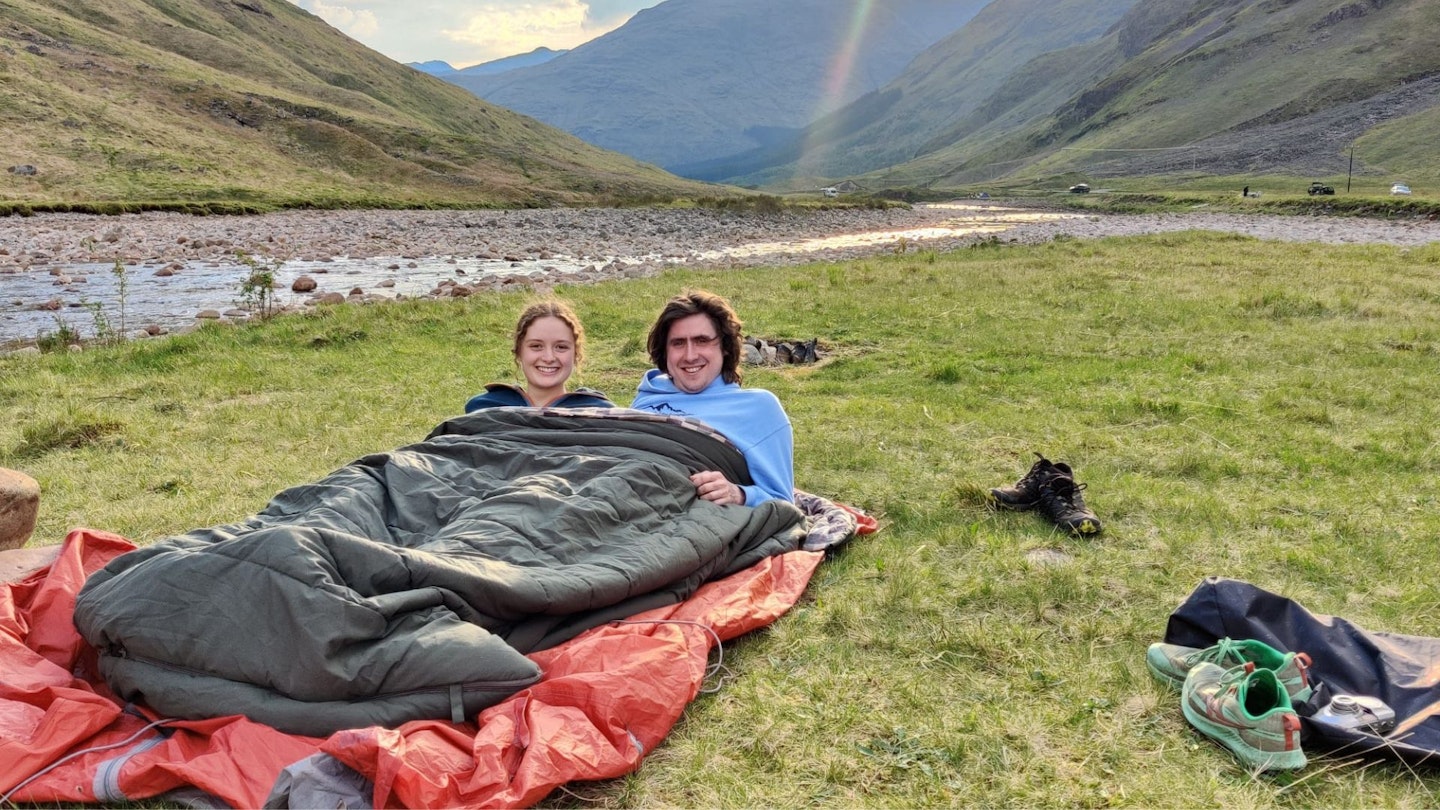
Choosing the right double sleeping bag isn't quite as complex as choosing a single bag for backpacking. There's fewer options on the UK market, and for the most part, they're not nearly as technical. However, there's still enough variation to need to make a considered buying decision, taking into account weight, bulk, cost and comfort temperatures.
Happily, we've had some of the best double sleeping bags on test for the last few months, and are pleased to report that whether you're a campsite-in-France-once-a-decade kind of couple, weekend van-lifers, or even hardcore backpackers who just want a cuddle when it's cold out, there's a great double sleeping bag out there for you.
How we tested the best double sleeping bags
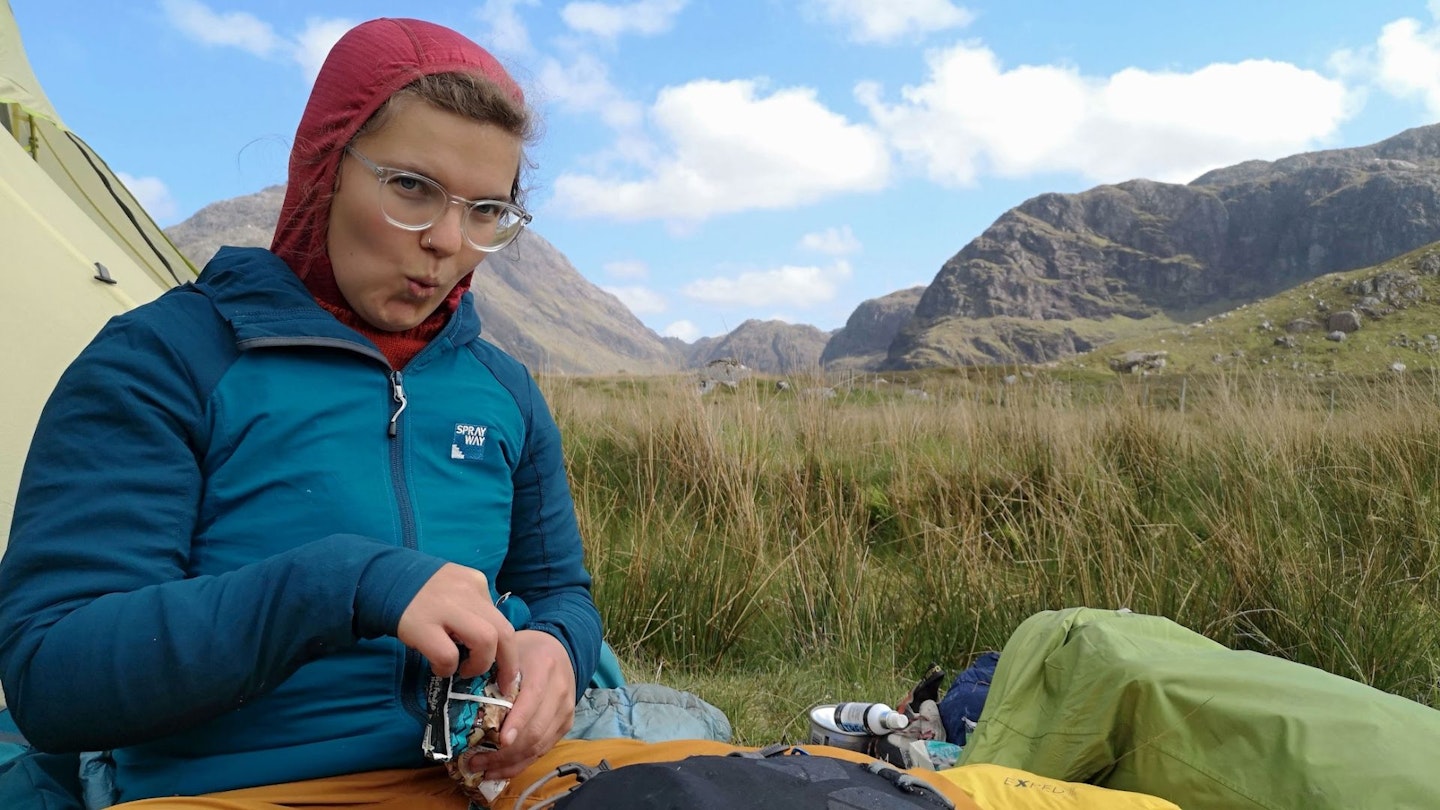
The sleeping bags on this list were tested by hardcore camper and LFTO writer Fliss Freeborn, accompanied by her partner, Mr Fliss. She also enlisted help from her similarly adventurous couple-pals Santi and Jenny, and Beth and Frazer. Each duo tested bags over weekend camps during spring and early summer in 2024, often in single digit temperatures on the windy west coast of Scotland.
Best double sleeping bags reviewed:
If you like the idea of sharing a bag with your partner, but one of you sleeps like a furnace, and the other like a freezer, then the Kelty Doublewide sleeping bag is for you. A myriad of interesting features ensure a good night’s sleep, whether it’s just hovering above freezing, or a balmy summer’s night - but it wins our best in test award because it also balances weight, size, cost and performance pretty well too.
The Kelty Doublewide’s main party trick is that it contains two built-in blankets, which add optional warmth to each sleeper when needed. We found this invaluable for springtime camping, where temperatures in the tent drop into single digits in the wee hours, before rising again at dawn. We also love the double-zipped design, which allows each user to control the amount of airflow in and out of the bag on their side: if you get hot feet, then you can simply stick them out of the end. For very warm weather, the top quilt is entirely removable (and makes a good picnic blanket too).
Where the Kelty Doublewide also excels is in its sheer enormity. This is a huge bag, easily accommodating anyone up to about 6’4”. It filled the floorspace of our entire two-man hiking tent, but offered ample room to wiggle about without disturbing each other. We also love the fact the fabric is weighty and ample enough to naturally close any gaps down the middle of the bag which might otherwise let in a draught.
The hood is designed to take two large pillows that you might bring from home, which lands us into the topic of use-case. Because at 4kg, this is not a lightweight bag, and nor is it especially compact. It’s a great option, then, for car camping and campsite capering but you’ll just be laughed out of the country if you try and fit it into even the largest of backpacking bags.
The other downside to this bag is that it’s a bit of a pig to carry any distance in comparison to others which have straps or handles; we’d recommend finding a duvet bag or similar item with handles. That said, it balances performance and weight much better than some of the other bags on test, and represents reasonable value for money for such a low temperature rating.
Overall, the Kelty Doublewide’s superior comfort, flexible design and wide dimensions make it a winner in our best of test, just pipping the Big Agnes King Solomon on both value and versatility.
Pros
- Fantastically customisable temperature regulation
- Very spacious
- Mummy shaped toe box and hood
- Space for full sized pillows
Cons
- Large pack size
- Relatively heavy
- No handle on stuff sack
| Sizes | One size |
| Packed size | 39 x 71 cm |
| Weight | 4.31 kg |
| Insulation | Cloudloft Synthetic Insulation |
| Materials | Shell: 75D High Filament Poly Taffeta | Lining: 75D Poly Taffeta |
| Temperature rating | Comfort 0°C | Limit -7°C |
The Outwell Camper Lux double sleeping bag is an affordable and versatile option for fanily-oriented camping. Priced competitively with an RRP of £140 (so often found for less at other retailers), it offers excellent comfort and versatility for a very reasonable price. It features a built-in pillow and is made from recycled polyester and PFC-free materials, making it environmentally friendly and machine washable. However, it does come with some drawbacks, such as a large pack size and considerable weight.
Designed for three-season use, the sleeping bag has a comfort rating of -1°C for men and 5°C for women, with an extreme limit of -16°C. Weighing 4kg, it is heavier than the King Solomon 35° Down Sleeping Bag but compensates with superior comfort and a lower price. Its polycotton filling (20% cotton and 80% polyester) balances breathability, softness, and durability, ensuring warmth even when wet. The 2.2kg fill weight contributes to the bag’s insulation without cold spots, thanks to the isofill technology - it kept us toasty warm over a cold spring weekend in the Scottish highlands.
Like many of the sleeping bags in this list, the Outwell's packed size of 52 x 52 x 26 cm is bulky, making it more suitable for car camping or vanlife, rather than backpacking. It is easy to pack by folding into a square, though it lacks a home storage sack which keeps filling loft, well, lofty. The internal lining is pure cotton, offering a soft and breathable feel, while the use of 100% recycled polyester in the filling and PFC-free treatment underscores its sustainable design.
Measuring 235 cm in length and 150 cm in width, the sleeping bag fits most users comfortably, providing ample space without causing cold spots. It’s so large that three medium-sized children could quite happily share the space, provided they don’t hate each other. Notable features include a zip-off hood, inside storage pockets, and the ability to convert into two single duvets should warring factions need separated. The easy glide zip system ensures smooth operation and allows for independent use by each person.
Overall, the Outwell Camper Lux Double Sleeping Bag is a great choice for budget-conscious campers who prioritize comfort and sustainability, despite its bulk and weight.
Pros
- Great value
- Washing machine friendly
- Comfortable
Cons
- Large pack size
| Sizes | One size |
| Packed size | 52 x 52 x 26 cm |
| Weight | 4kg |
| Insulation | 2200 g Isofill, recycled polyester |
| Materials | Shell: Polycotton, 80% polyester / 20% cotton | Lining: Cotton flannel |
| Temperature rating | Comfort 5°C | Limit -1°C |
This is the diehard outdoor enthusiast’s double sleeping bag. For anyone looking for a lightweight, warm, packable and fantastically designed sleeping setup for two, this is it. The down fill (notably, only on the upper side of the bag, to save weight) is rated to -7°C comfort, so constitutes a four season UK bag, but the 35F version which uses the same design (yes, it’s also lighter and cheaper) will do for three. The 20F version we tested came in at 1.7kg, which when split between two is just 850g each. Most sleeping bags of this calibre will be at least 1kg each usually; more often than not straying into 1.2-1.5KG territory. And that’s before you’ve considered the extra warmth gained by sharing body heat too.
We love the fact the Big Agnes allows users to incorporate whatever lightweight mats they already use. We personally use two Thermarest Neolites which slot perfectly into the pillow pockets inside the bag, keeping them close together and complementing the mummy-shape of the bag. However, double mats and larger square mats can also be used in a similar manner with the poppers and ties on the underside of the bag, keeping everything in place overnight. We also love the poppers in the middle of the comforter which can be closed to stop any pesky draughts.
The hood cinches in brilliantly, and there’s a zip on each side for each person to have control over both temperature and exit and entry. The whole thing packs down into the size and shape of a synthetic single bag, and with the help of an external compression sack, and be compressed even smaller for backpacking.
Downsides, though, do exist with this sleeping bag, and the first is of course, the price. It’s spenny by anyone’s standards, but is as expected when it comes to down bags which don’t weigh a huge amount and pack down small too. It’s also not an especially large bag to sleep in between two of you: for couples that like a cuddle, or are both smaller than 5’9” (we tick both those boxes) it’s brilliant, but if you’re a keen starfisher, or a particularly large human being, then you might find this bag slightly restrictive when sharing with a partner.
You’re also required to already own a decent sleeping mat if you’re using this bag in winter: anything below 5°C and you’ll struggle with something without a good R rating. Overall, however, the design, packability and low weight of this sleeping bag make it a great option for outdoor couples looking to share warmth and save weight on the hill.
Pros
- Brilliantly designed for backpacking
- Very lightweight and packable
- Can be used with two single mats
Cons
- Huge upfront investment
- Patchy availability in the UK
| Sizes | One size |
| Packed size | 53 x 25cm |
| Weight | 1.81kg |
| Insulation | 650 fill DownTek™ bluesign® approved PFAS-free water repellent |
| Materials | Shell: Polyester ripstop shell fabric featuring a PFAS-free water-repellent finish | Lining: post-consumer recycled polyester taffeta lining featuring a PFAS-free water-repellent finish |
| Temperature rating | Comfort 0°C | Limit -7°C |
If you’re looking for an inexpensive, does-it-all bag, whose pack size and bulk don’t matter, then the Berghaus indulge will do the job, and it’ll do it well. This is a great bag for kitting out summerhouses or yurts, for spare rooms, or for vans where duvets and sheets are a whole ‘nother faff. It works well down to about 7°C, making it a good option for late spring, summer and early autumn camping.
The brushed cotton inner gives a duvet-like feel, and we especially like the inner pockets for storing things like earplugs. We also like the hood and built in pillows (although these may need reinforcements if you like a high pillow at home) and the zip seems sturdy too. You can also cinch in the chest baffles for extra warmth when needed, and if you really don’t want to share the bag, the whole thing can unzip and become either two quilts, or two seperate single bags (these aren’t huge widthways, so will suit smaller people or children rather than burly rugby players).
However, if you’re at all limited for boot space or storage, then a different option may suit you better because - Lord have mercy - this is an absolute unit of a sleeping bag. What’s saved in cost is significantly countered in weight and bulk. The whole thing weighs 6kg, and packs away to something the size of Denmark. It’s also not quite as spacious in use as the Kelty DoubleWide or the Nemo Jazz Double; if you’re of a larger build you’re best of with another option too. However, as a single person, this is a fantastic option for solo-starfishing as it’s not so big you’ll end up with cold patches.
Pros
- Fantastic price
- Can become two separate bags if needed
- Good features for the price
Cons
- Not the widest bag
- Very bulky to pack away
| Sizes | One size |
| Packed size | 53 x 42 x 30cm |
| Weight | 4.8kg |
| Insulation | Synthetic insulation |
| Materials | 230T microfibre polyester outer, 100% cotton flannel lining |
| Temperature rating | Comfort 3°C | Limit -2°C |
The Vango Aurora is a beast of a thing. It’s a king size double sleeping bag offering a duvet-level of comfort and excellent temperature regulation, keeping us warm even when the mercury dropped to 8°C at night (Scotland in the summer - what can you do?) With a comfort rating down to 1°C, the Aurora is suitable for all but the coldest of months, and at £140 RRP, it’s a bit of a bargain.
We especially liked the choice of materials here. The cotton material prevented any clammy feelings you might get with other, more synthetic style linings; this also meant there was no rustling sound against the sleeping mats - an added bonus when there’s two of you wiggling about inside the bag. It also prevented any sort of condensation buildup, with the wonderful breathability of the fill kept us at a perfect temperature throughout the fluctuations of Scottish springtime.
And yes, this thing is big: the clue’s in the name. The largest sleeping bag on test (on many accounts - more on that in a tick), the Aurora so will suit larger or taller people - or simply those who want as much room as possible to move about. In temperatures closer to 0°C, this might be considered a disadvantage, seeing as cold spots will be inevitable in a bag of this size, but it’s unlikely you’ll be using this sort of bag in extreme conditions.
Inevitably, a great price and fab performance will come at the expense of something and this time it’s weight. Yup, although the Aurora packs down to a (slightly) smaller size than the Berghaus indulge, it weighs more. This thing comes in at just over 6kg, which is actually laughable when you consider that’s half the weight of some full size family tents. If you can afford the boot space and don’t need to lug it very far, this is a great option for family camping - but we think this bag is best suited to year-round van-life as it’s machine washable, is a great neutral colour with a jolly chequered pattern and will keep you cosy on cold nights.
Pros
- Great breathability and temperature regulation
- Soft brushed interior
- Very spacious
Cons
- Quite heavy
| Sizes | One size |
| Packed size | 50 x 54 x 30cm |
| Weight | 6.15kg |
| Insulation | 60% Single Hole siliconised hollow fibre/40% polyester fill |
| Materials | Pollycotton shell: 30% Cotton/70% Polyester |
| Temperature rating | Comfort 2°C | Limit -3°C |
This is a real no-frills option from Decathlon. Yes, it’s the cheapest on test. Yes, it packs down relatively small in comparison to other bags. No, it won’t keep you especially warm in the shoulder seasons in the UK, but if you’re taking it summer camping in Europe, or you're glamping in July then it’ll work a treat.
It’s rather spartan in terms of features, with no built-in hood or drawstrings, but the brushed lining does a good job of being breathable and regulating your temperature well. Its envelope design is suitable for two people up to around 6’2”. Although it’s not the most generously proportioned on this list, it’s plenty large enough for two, especially in warmer climes where you’re likely to have the zip open anyway.
We found it to be too cold to use when wild camping in Scotland’s variable spring conditions, but it’s 10°C comfort limit will be more than adequate for most UK summer camping (especially in the tropical southern bits, like Cornwall) and pretty much perfect for any roadtrip abroad in a van or a family tent. The £50 price tag makes this an appealing option for occasional campers, and the small-ish pack size (it can definitely be compressed more with a third-party compression sack) with a hand carrying handle makes it good for carrying to and from the car for festivals too.
Pros
- Nice and cheap
- Packs down smaller than other doubles
- Versatile
Cons
- Not as warm as other bags
- Very few features like pillows or pockets
| Sizes | One size |
| Packed size | 45 x 40 x 30cm |
| Weight | 2.9kg |
| Insulation | 100% 300g/sqm polyester padding. |
| Materials | Outer fabric and lining: 100% polyester. |
| Temperature rating | Comfort 10°C | Limit 5°C |
The NEMO Jazz double is a great, versatile sleeping bag design, similar in principle to the Kelty DoubleWide. It has some unique features we love to see such as a huge mesh pocket on the underside for keeping a double mat (or two singles) in place. It’s also cosy, with the isofill synthetic lining keeping us warm in the mid-single digits. The material also has a good weight to it that makes it feel very duvet-like. Everything feels incredibly well made, including zips and drawstrings - this is a high-quality bag designed to last.
To help with temperature regulation, the Jazz double comes equipped with a thin but mighty double microfibre blanket, which can be removed completely if not needed. We reckon it adds a good 2°C to the comfort rating of the bag when used internally as a blanket underneath the main comforter, and it helps that one side can be unbuttoned lest your sleeping bag partner sleep hotter than you. We also like the bright neon yellow colour of the lining, as it makes finding lost items such as phones and earplugs really easy, even in low light.
The NEMO’s design is similar to the Kelty Doublewide: it’s a sort of rounded rectangle shape that unzips from the bottom to help with staying cooler in the hotter weather. The hood can also cinch down when its cold, and keeps pillows in place nicely. It’s nearly as large, too, giving ample room for couples (or good friends) to roll over any which way they like, and snooze without disturbing their partner. It’s the perfect size for a three-person hiking tent but will be slightly too
The reason NEMO comes second place to Kelty for this style of bag is twofold: firstly the NEMO is far, far more expensive for a similar weight and comfort level. Secondly, the storage sack provided for the NEMO is ridiculously large - it could compress much smaller if needed. It’s a pig to store.
Pros
- Excellent temperature regulation
- High quality
- Innovative design
Cons
- Very bulky pack size
- Expensive
| Sizes | One size |
| Packed size | 79 x 36 x 36cm |
| Weight | 3.42 kg |
| Insulation | StratoFiber synthetic fill |
| Materials | Shell fabric: 50D Ripstop Nylon w/DWR | Inner fabric: Nylon Taffeta |
| Temperature rating | Comfort 0°C | Limit -7°C |
What to look for in a double sleeping bag
When choosing a double sleeping bag, there are a handful of considerations to make. Here's our detailed guide to each of them.
Comfort temperature vs limit temperature vs extreme temperature
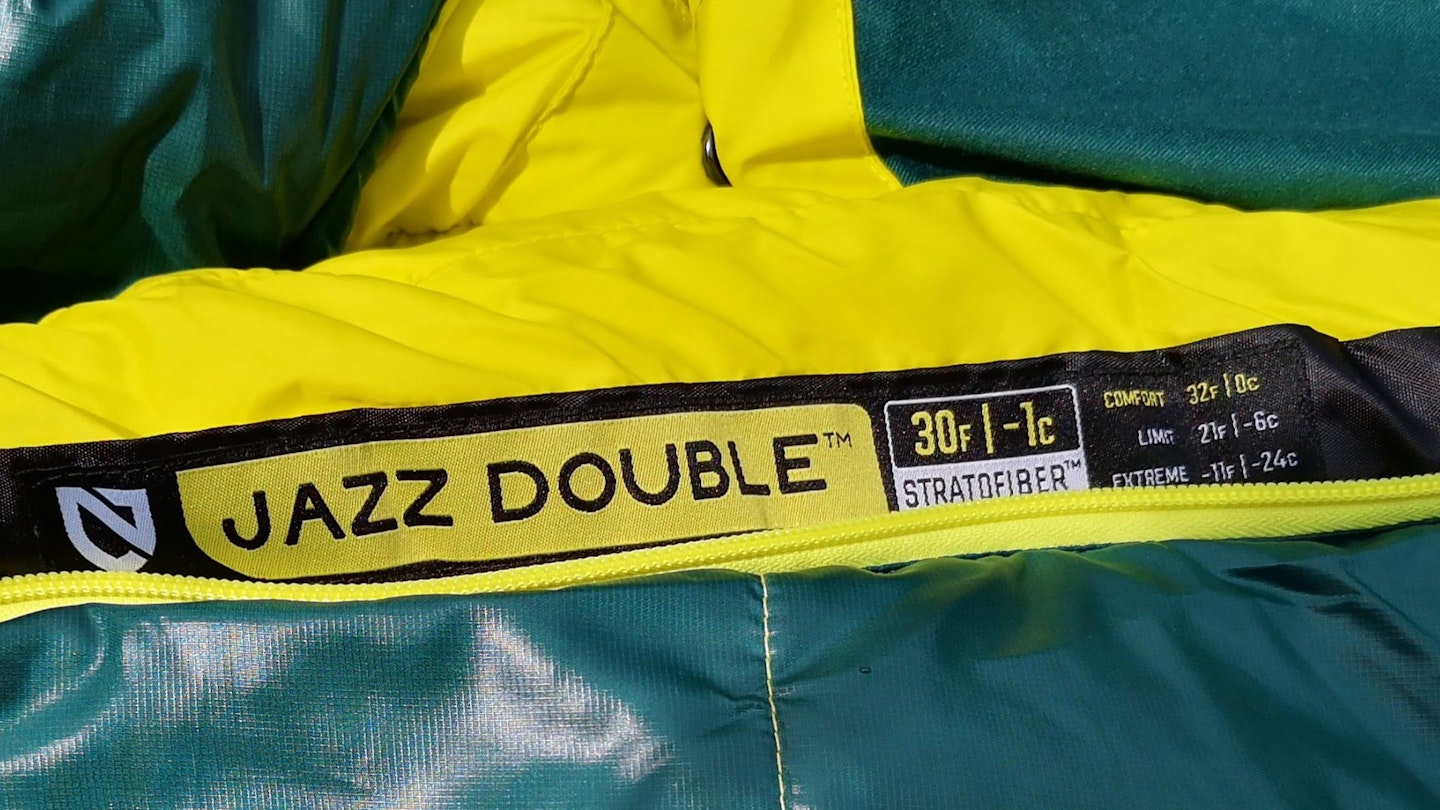
Most sleeping bags come with three temperature ratings: comfort, limit, and extreme. The comfort rating is the lowest temperature at which the average person will feel comfortable. The limit rating is the lowest temperature at which the bag will keep you from getting too cold, and the extreme rating is the temperature at which the bag will keep you alive but, well, not exactly comfortable. Some bags have differing limits for men and women, as women tend to sleep colder.
Ensure the bag’s temperature rating matches the coldest conditions you expect to encounter - if you're worried, choose a warmer bag, as you can always dump heat using size zippers, but it's harder to keep it in if you've chosen a bag that's too chilly for your trip. For summer only camping in the UK or hotter parts of Europe you'll be able to get away with a bag whose comfort temperature is around 10 degrees, which will save you both weight and money. However, if you're doing anything in the shoulder seasons, we'd recommend a bag with a comfort rating of five degrees or less. For double winter sleeping bags or quilts (which can often save weight in comparison to taking one each) we'd recommend a bag with at least a comfort rating of 0 degrees and a limit well into the minuses.
Dimensions
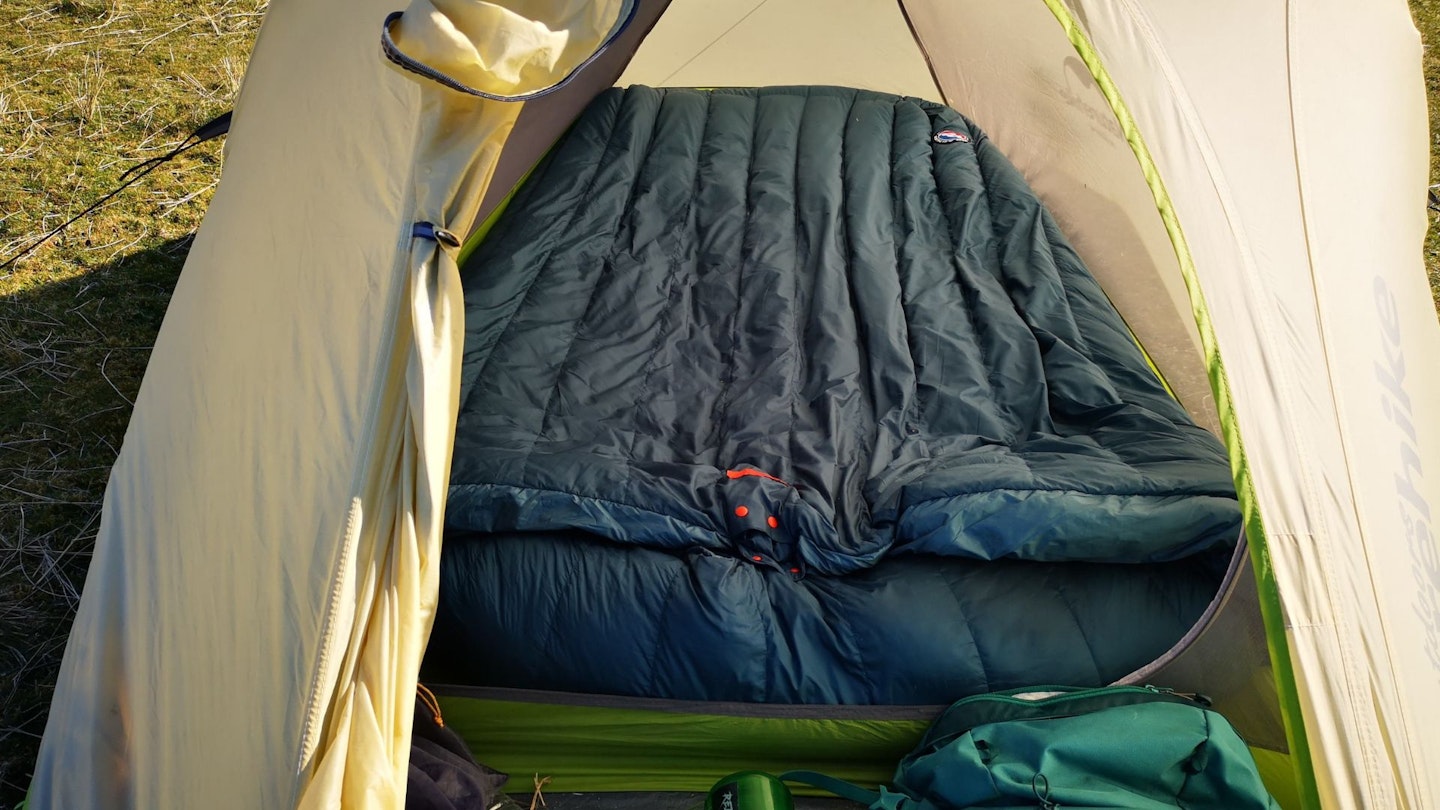
Size matters: a spacious sleeping bag provides better comfort and room to turn over, but a too-large bag may cause heat loss due to trying to heat up dead space. Check the dimensions to ensure it accommodates your height and width requirements - if one of you is a known wriggler, then definitely opt for something roomier.
Choosing a double sleeping bag will also depend on what sort of tent you're using - a two-man hike tent, for example won't fit something big and bulky like the Vango Aurora and you'll end up with condensation on the bottom and sizes of the bag where it touches the walls - but if you're glamping or campsite-camping in a family tent, knock yourself out.
Packed size
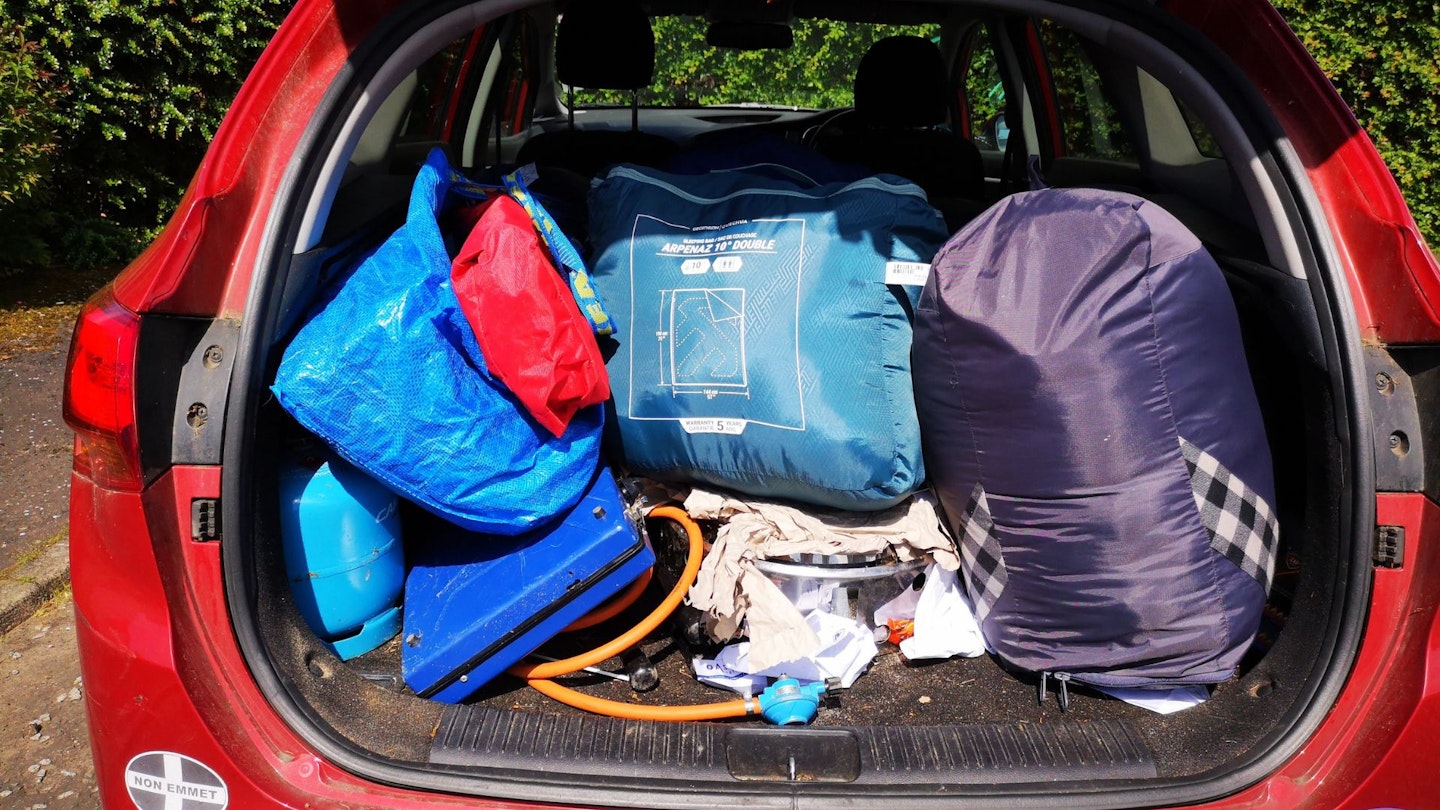
We won't beat about the bush here: some of these things are monsters to store, so if you're short on room, check the packed dimensions of each bag before ordering. We'd also recommend measuring your tent size, plus your sleeping pad and seeing if the sleeping bag you want will actually fit in the boot of your car with all that nonsense in there too. We know for a fact that a Skoda Fabia boot will struggle with some of the larger bags, plus camping kit, but if you did want to transport 6 of them at once plus camping kit, a Kia Cee'd estate with the seats down will just about manage.
Weight
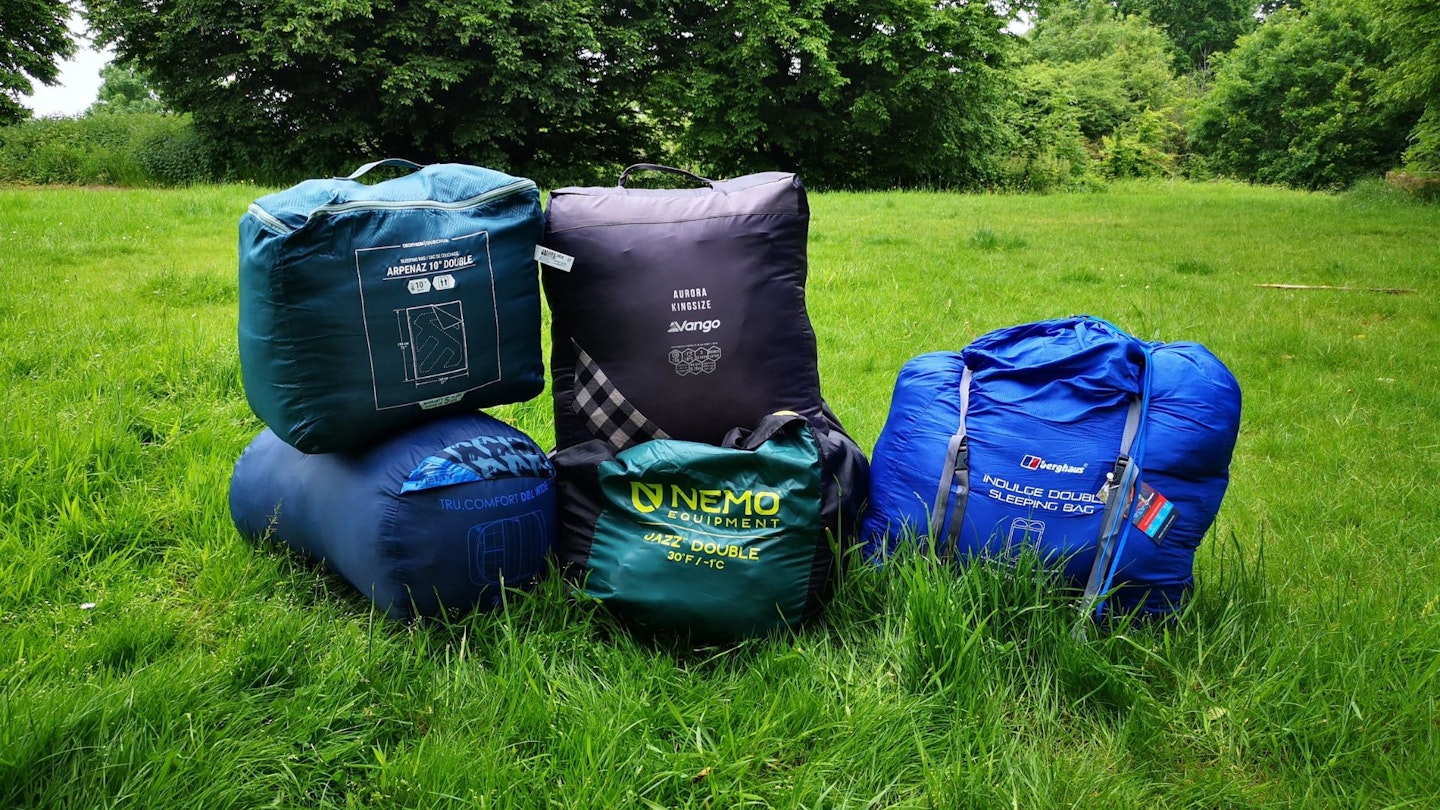
Weight is an interesting one with double sleeping bags, because for the most part, they're not exactly backpacking friendly. They're often incredibly heavy, weighing anywhere between 3-7KG (far more, incidentally, than a backpacking tent) unless you're shelling out big bucks for the lighter down-filled options. You'll also want to consider how and where you'll be using your double sleeping bag: weight won't matter too much if you're just hauling it a few meters in and out of your car at a campsite, but even walking the 500m to festival campground can prove tricky with one of the bulkier bags.
Lining
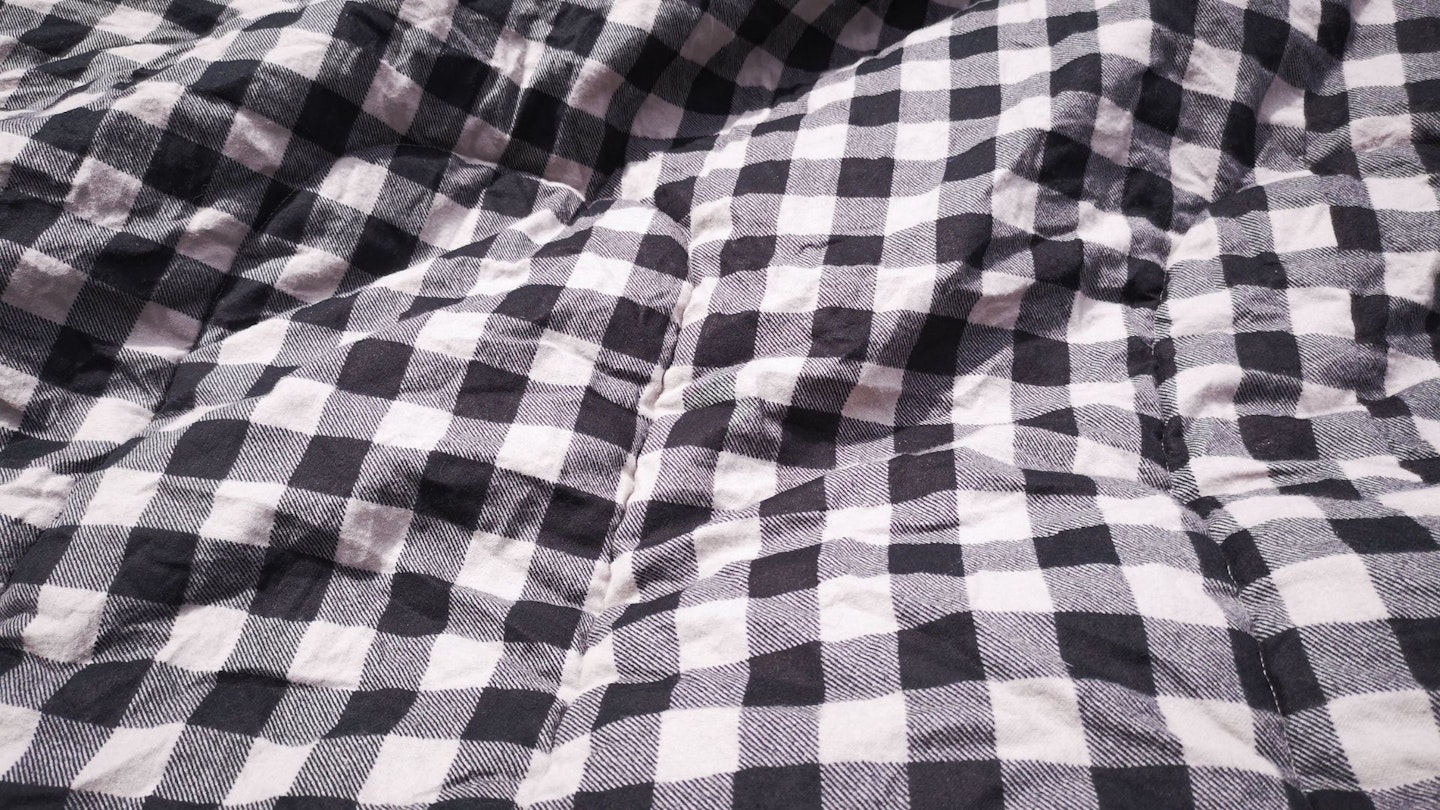
When there's two of you sharing a bag, resulting in increased body heat, the lining becomes just as important as the insulation - because there's now double the sweat to think about. We love the brushed cotton of the Vango, Berghaus and Outwell designs, as they kept us cool and comfortable on warmer nights, despite being rated for higher than they needed to be. Using your double sleeping bag with a liner, or even a sheet from home if you're not worried about weight, will increase its lifespan because you won't have to wash the bag quite as much.
Insulation materials

Down insulation, made from feathers of birds like ducks or geese, offers an excellent warmth-to-weight ratio, making it ideal for cold, dry conditions where minimising weight and space is crucial. It is highly compressible and durable with proper care, but it loses its insulating properties when wet and takes longer to dry - and anyone who's ever browsed the sleeping bag section of an outdoor shop will tell you they're twice the price of their synthetic counterparts.
In contrast, synthetic insulation, made from polyester fibres, provides good warmth but is bulkier and heavier than down. It retains insulation even when wet and dries quickly, making it suitable for wet, humid conditions. Synthetic bags are less compressible but are more resilient to repeated washing and are generally more affordable. This makes synthetic insulation a good choice for most use-cases for double bags.
Features
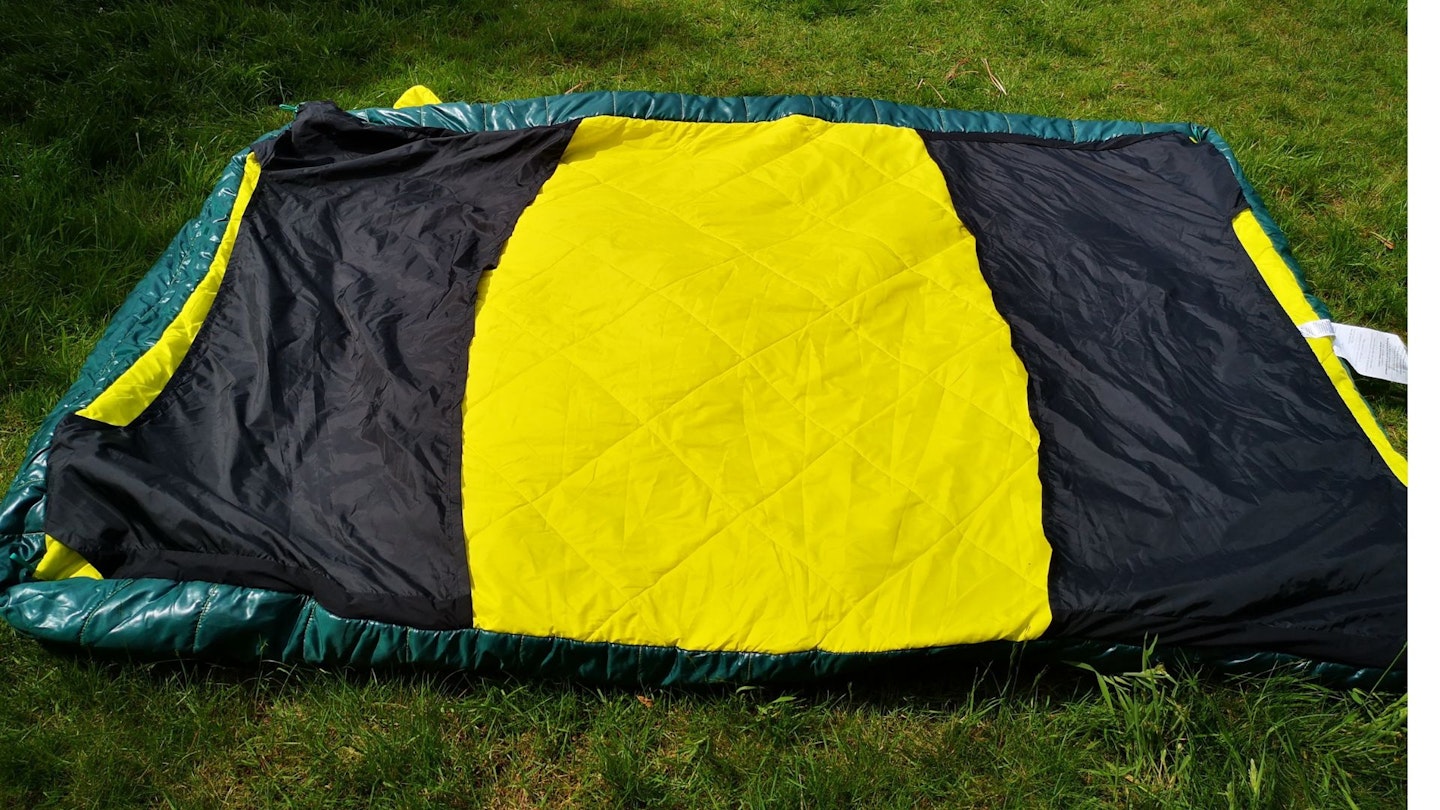
Features vary hugely on the double sleeping bag market. Many inexpensive doubles are simply plush rectangular envelope style bags - they're cheaper to manufacture. However, if you're after something with good performance in colder weather, you'll want to look for a hood that cinches in over your head, in addition to a more mummy-shaped footbox to stop excess heat loss to unused corners.
Other important features to look for include built-in pillows for longer style camping trips, buttons or flaps that reduce airflow between sleepers, and zips which allow heat-dumping to take place from the toebox. Some bags also come with a built-in blanket option. We've found one of the most useful features of any bag is the ability to stap in a mattress on the underneath, or indeed, inside it in the case of the King Solomon from Big Agnes.
Double sleeping bag FAQs
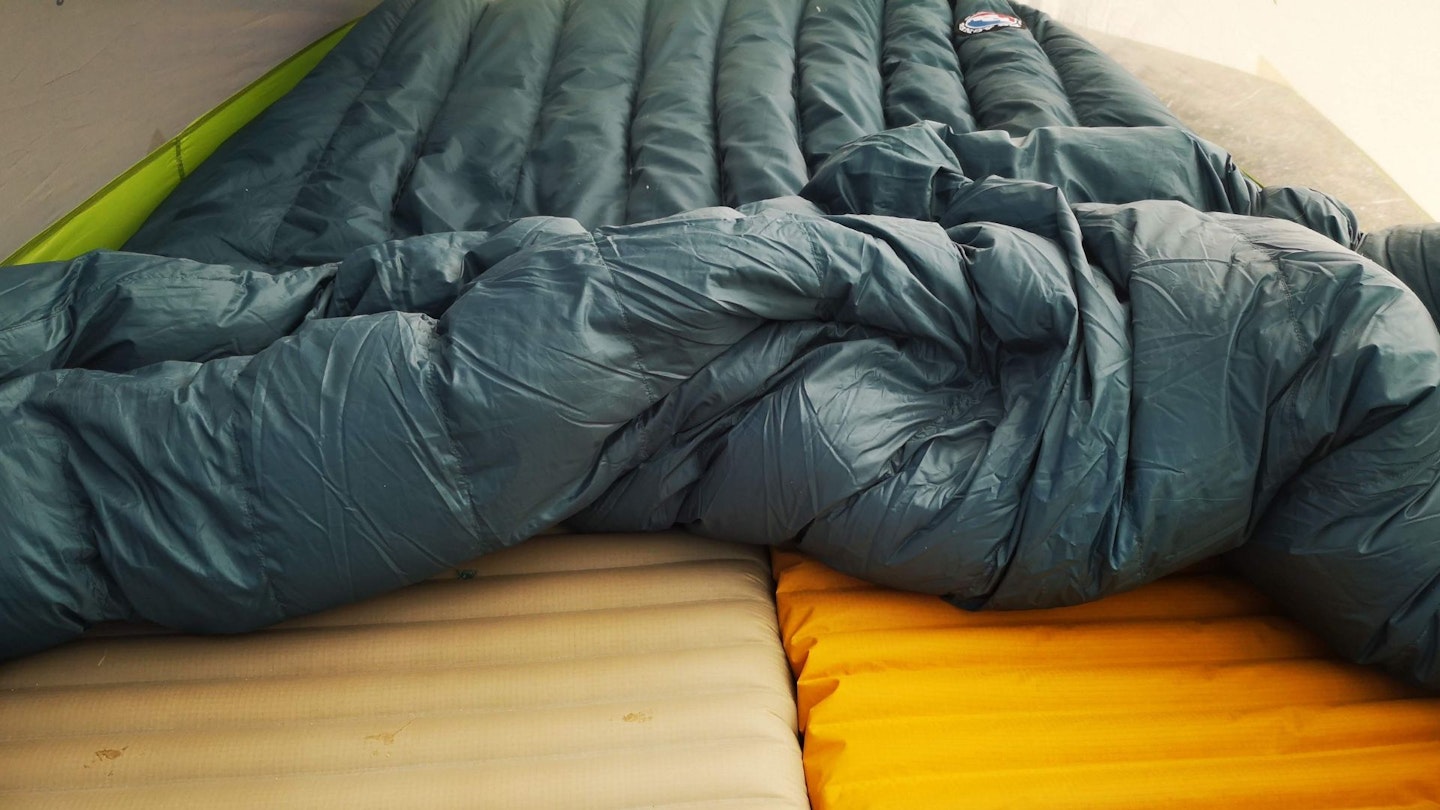
Are double sleeping bags a good idea?
For many couples, double sleeping bags are a great idea. They're a comfortable alternative to sleeping separately, and mean that you're kept a little warmer by each others' bodyheat. They're more practical than taking a duvet with you when camping, as they tend to be made from materials that are easier to clean, plus they're more insulating on colder nights. For backpackers, they also represent good value in terms of weight and cost - if you can share body heat and carry something lighter, then you're winning.
The only time when they're not as good as two singles is if there's a wild difference between how you sleep as a couple. For example, if one of you is especially tall, then having a double bag might not be as practical as sleeping in an extra long bag on your own. Likewise, if one of you sleeps especially cold, the increased space in a double sleeping bag might prove to be just a little too draughty (but we think the Kelty Doublewide bag sorts this issue).
Can you double up single sleeping bags to make a double?
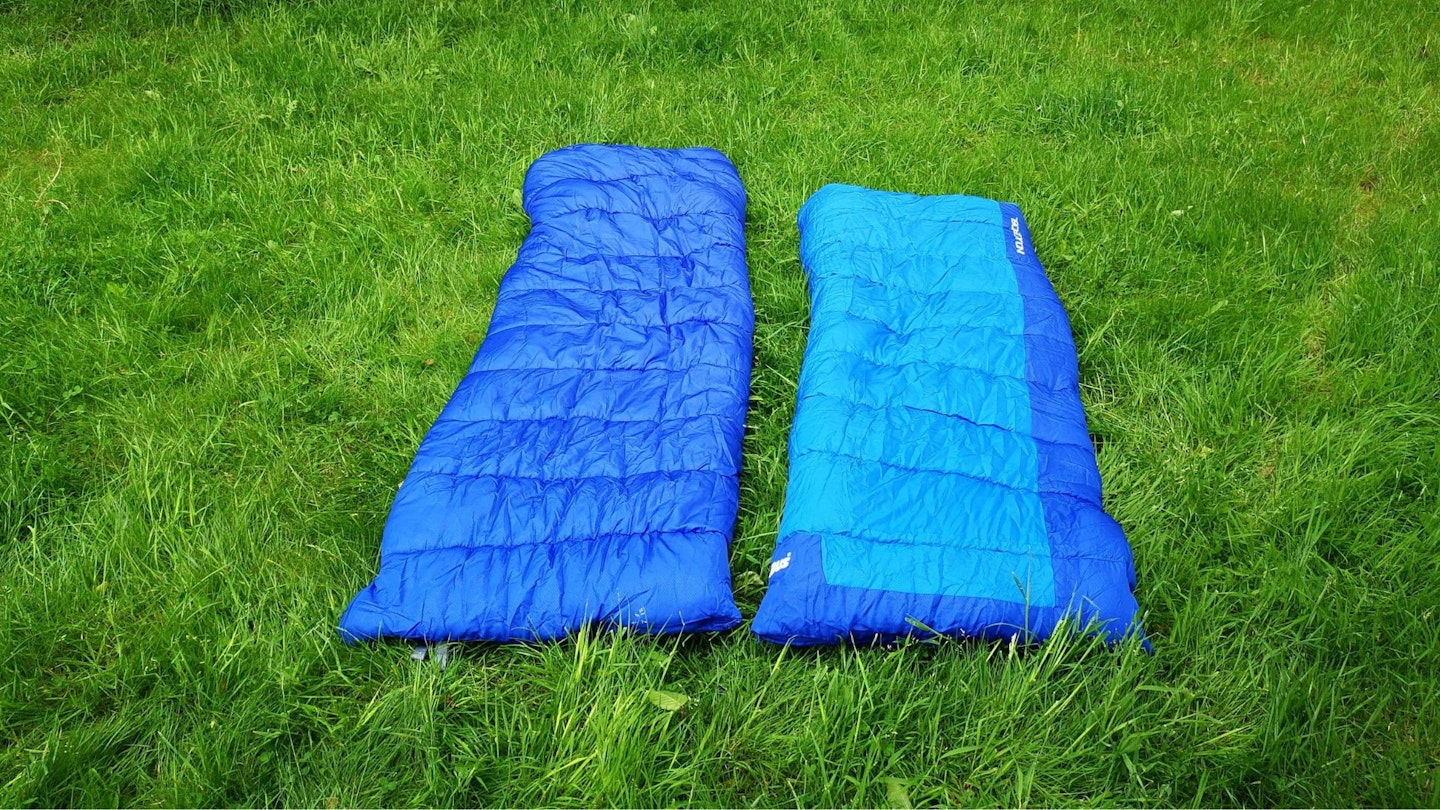
Some single sleeping bags have been built with exactly this in mind. For example, all of the Rab Ascentrange can be zipped together to make a cosy double. However, not every sleeping bag is compatible with a twin of the same model; anything with a front zip won't work - check the company website to make sure. Additionally, many double sleeping bags can come apart to make two singles, or two quilts - useful for children or for when it's too warm to snuggle up together.
Can you wash a double sleeping bag?
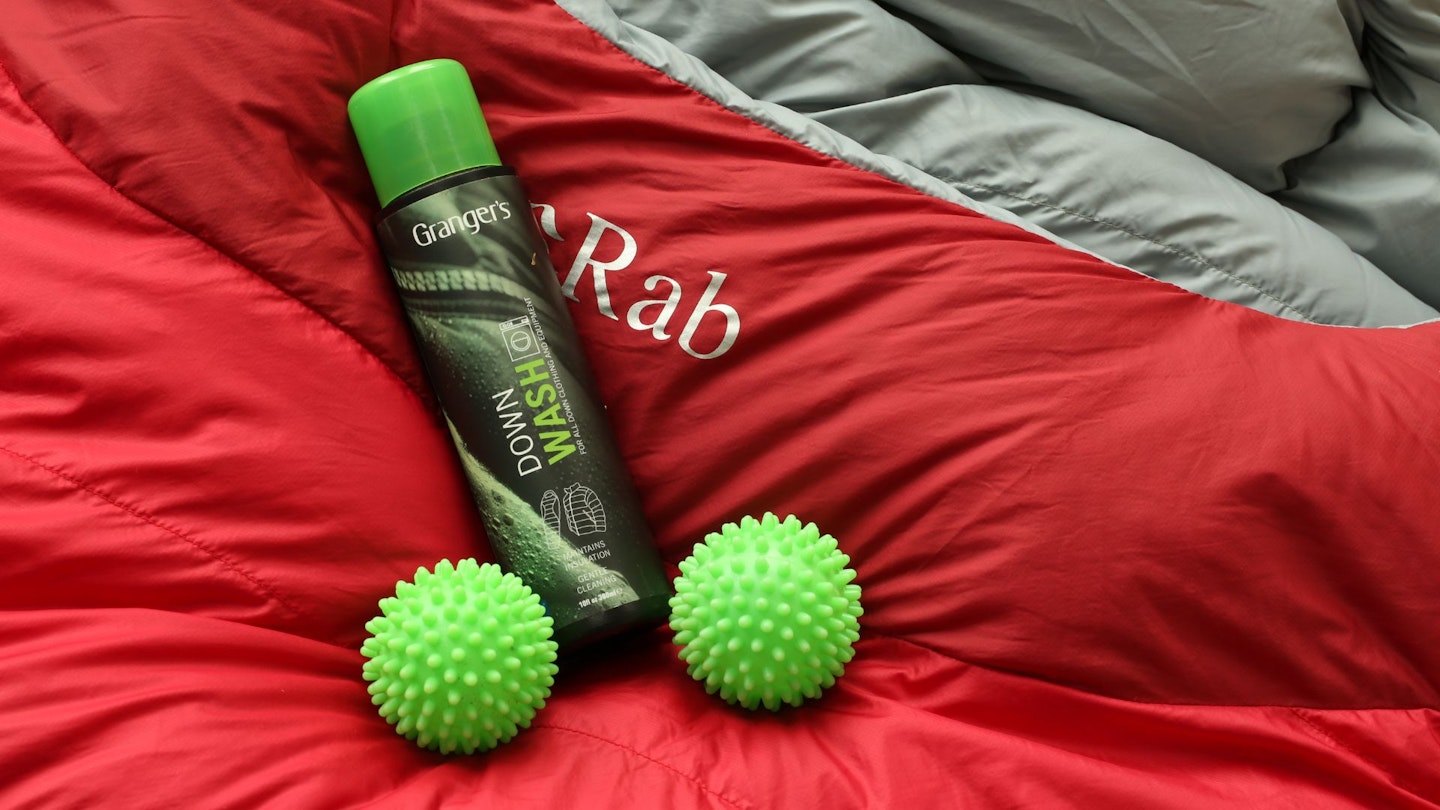
Yes, you can wash most double sleeping bags, but you can't just bung it in on a 30 minute cycle and be done with it. Firstly, read the care label - most bags will advise to be washed no hotter than 30 degrees. You should hand wash sleeping bags rather than in a washing machine to ensure they don't rip (washing machines can't usually take the weight of a wet sleeping bag anyway, especially a double). In terms of detergent, use Grangers Down Wash or Nikwax Down Wash.Direct. These eco friendly detergents are better for the fabrics and insulation than regular laundry detergent. You can use them for your insulated jackets too.
Dry the sleeping bag in a large capacity dryer on a low heat or air dry setting, adding clean tennis balls, or dryer balls to break up clumps and restore loft: this is especially important if your sleeping bag is filled with down. Check periodically to ensure even drying, as it may take several hours.
If machine drying isn't an option, dry flat in a well-ventilated area, turning occasionally - a garden table is great for this. Avoid hanging out vertically on a washing line, as gravity might have an effect on the distribution of the insulation. After drying thoroughly (check for any damp sports as they could turn mouldy), store the sleeping bag in dry, well-ventilated place such as on top of a wardrobe.
How to store a double sleeping bag
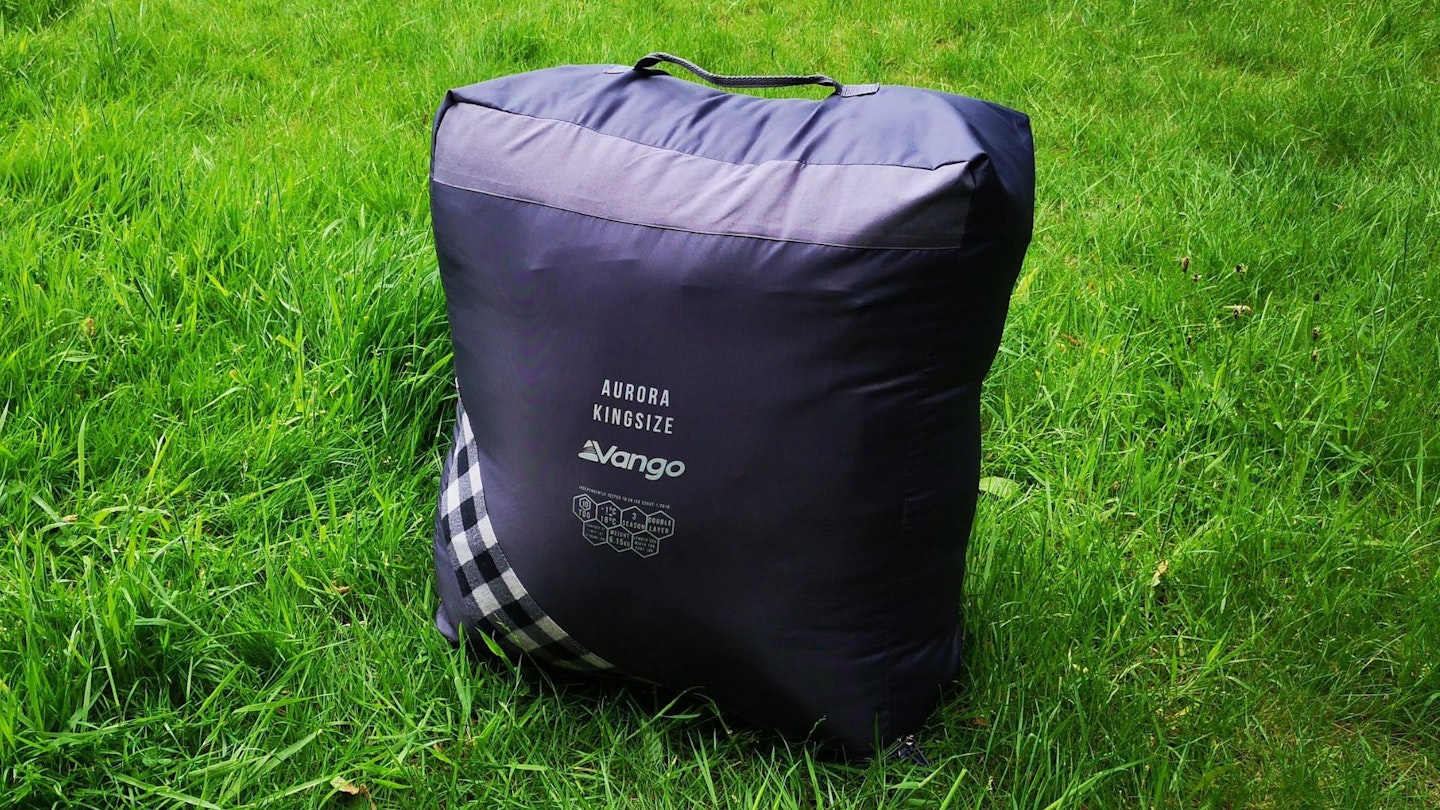
Most double sleeping bags are synthetically insulated, so unlike down, can be stored in the carry bag they came in. Down double sleeping bags must be stored uncompressed in a mesh or cotton sack. However, to get the most life out of any double sleeping bag - be it down or synthetic - we suggest storing it as loosely as your space will allow. Many sleeping bags will come with both a storage sack, and a compression sack.
About the author

Fliss Freeborn is a writer for LFTO who can think of nothing more exciting than hopping into a comfy tent with a cosy sleeping bag, a head torch and a book - whatever the weather. Fliss lives in Glasgow but is more frequently found on the wild west coast of Scotland, fishing, scrambling and cooking whatever she's caught on a fire or a stove before setting up camp somewhere stunning.












































